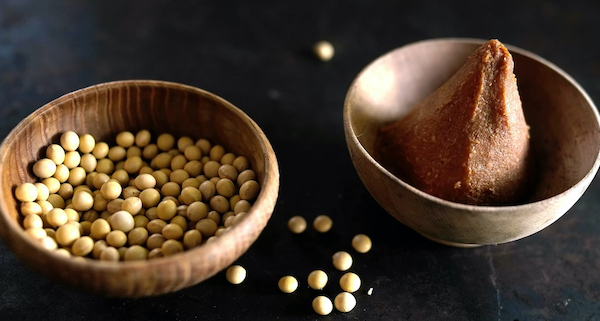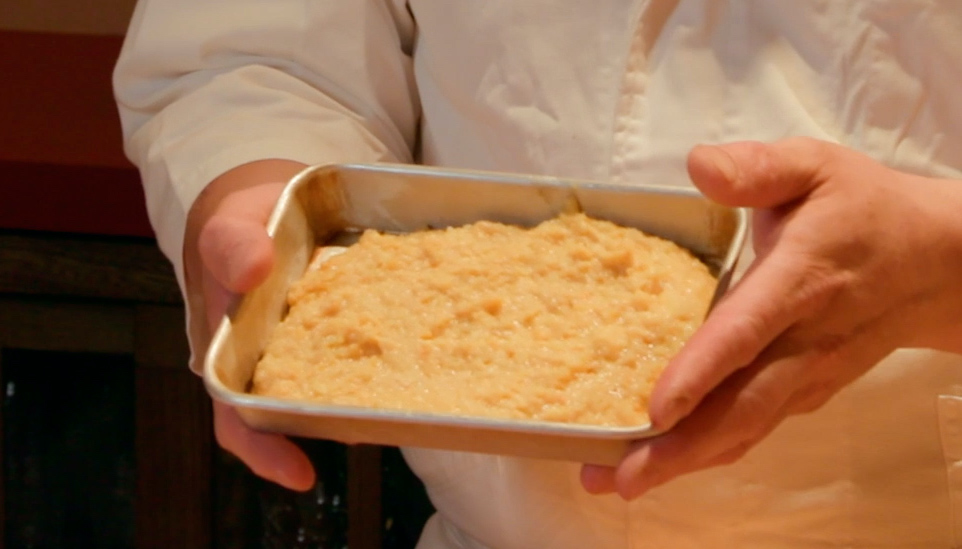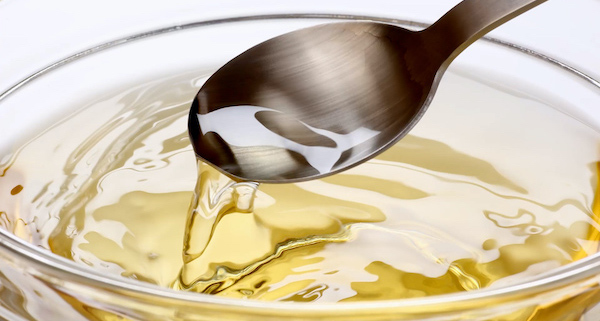Discover More about the Ingredients
Miso


Miso is made from soybeans, rice or wheat, salt and kōji mold (Aspergillus oryzae). There are various types of miso, such as rice miso, made primarily from soybeans and rice; wheat miso, made primarily from soybeans and wheat; and soybean miso, which is made using only soybeans. To make miso, kōji mold is sprinkled onto steamed rice, wheat or soybeans. Salt and steamed soybeans are added to the mixture. This is then left to ferment and age. Miso has long been eaten not only as a seasoning but also as a nutritious source of protein. It is said that people in the old days carried little miso balls, which were rolled and dried, and ate them for nutritional support. Many Japanese people have one bowl of miso soup every morning, the common belief being it is very good for one’s health.
Rice Vinegar


The first step is to make sake using polished and steamed rice, rice kōji and yeast. Rice vinegar is then made from the sake. Acetic acid bacteria (mother of vinegar) is added to the sake, and this mixture is fermented and aged for about 1 to 4 months. The longer the aging period, the more mellow the taste.
There are about 4,000 varieties of vinegar in the world, and vinegar can be made by fermenting any kind of alcohol. Grain vinegars and fruit vinegars are two typical examples. Wine vinegars use grapes instead of rice, and can be made from wine, similar to how rice vinegar is made from sake.
Vinegar Benefits Suggested by Fermentation Experts:
・Can be used as a preservative
・Improves liver and digestive health
・Helps with recovery from exhaustion
・Weight loss
・Cleanses and tones the skin
* See "Content Supervisors" on the main page.
Koji Mold
In Japan, fermentation is not only used to produce iconic dishes, but can be found in the very building blocks of Japanese cuisine. For that, we have to thank a special type of catalyst found only in Japan – koji mold, a living microorganism that helps break down other materials in the process of fermentation. Known as the “national fungus,” koji mold (Aspergillus oryzae) feeds on grains, often rice (partially or fully cooked), barley, or soybeans, key ingredients in Japanese foods.
“Rice koji” is added to soybean paste to create miso, or to shochu (distilled hard liquor) to create mirin (a rice wine widely used in cooking), or to soy to create soy sauce.
Learn more about koji and fermentation.

